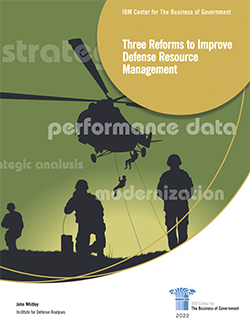
Three Reforms to Improve Defense Resource Management

Attempting to allocate and coordinate these resources to conduct operations, maintain readiness, and invest in modernization presents an enormous undertaking. But directing the allocation of resources enables the Secretary of Defense to establish and exercise control over DoD spending as an essential element of producing a strategy-driven budget.
The DoD process used to allocate and manage resources involves the Planning, Programming, Budgeting, and Execution (PPBE) system established in 1961. Considered a revolution in management at the time, the now sixty-year-old system has proven a powerful and enduring tool for unifying resource allocation decisions, cementing the Secretary’s control over department operations, and focusing DoD on the future. The PPBE system has also received frequent criticism for being too bureaucratic, slow, cumbersome, and expensive.
As author John Whitley notes, Congress has now focused on the PPBE system. The 2022 National Defense Authorization Act directed establishment of a PPBE reform commission, tasked with conducting a comprehensive assessment of the efficacy and efficiency of all phases and aspects of the PPBE process.
Whitley’s report provides an overview and history of the PPBE system, recommends three key PPBE challenges and identifies obstacles to avoid, all of which the Commission could address. These challenges are:
- The lack of strategic analysis to support the planning phase of the PPBE system.
- The need to accelerate modernization.
- The PPBE system can be insular and operate off its own baselines disconnected from conditions on the ground Identifying ways to make greater use of realized financial and performance data would be another major contribution of the commission.
The report offers three key PPBE reforms to address these and related challenges: 1) Rebuild strategic analysis capability, 2) improve agility in allocating resources, and 3) make greater use of performance data to inform resource decision-making.
This report can support the commission’s work by providing an overview of the PPBE system, challenges that have hindered previous reform efforts, and key recommended reforms.
In an increasingly dangerous world with near-peer competitors investing rapidly and posing new and evolving risks, improving DoD resource allocation stands as a national security imperative. We hope that this report offers timely insights and guidance that can assist the PPBE Commission and other efforts to improve the PPBE process in achieving DOD’s critical national security mission.



